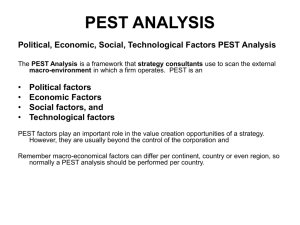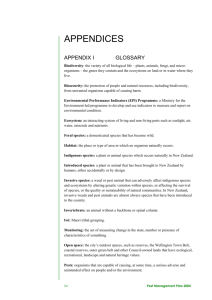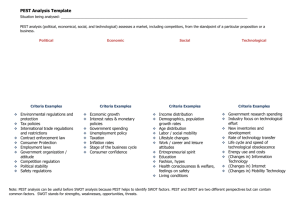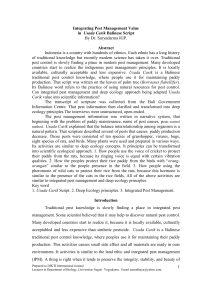ECOSYSTEM “SERVICES” AND PEST SUPPRESSION IN TROPICAL IRRIGATED RICE William H. Settle
advertisement
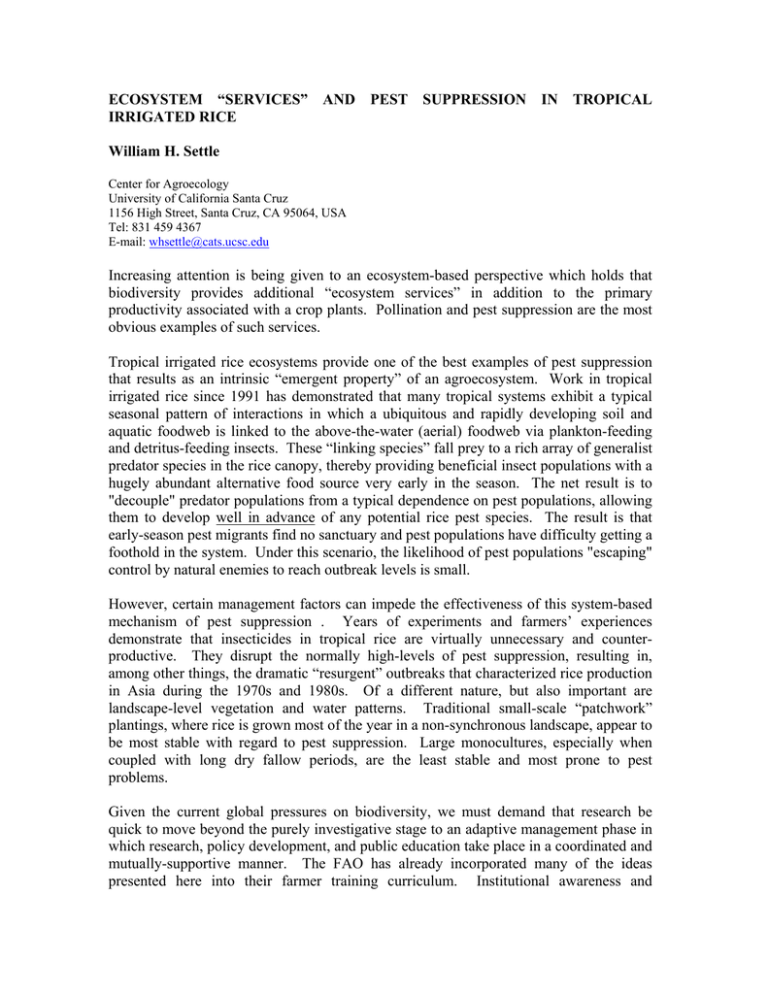
ECOSYSTEM “SERVICES” AND PEST SUPPRESSION IN TROPICAL IRRIGATED RICE William H. Settle Center for Agroecology University of California Santa Cruz 1156 High Street, Santa Cruz, CA 95064, USA Tel: 831 459 4367 E-mail: whsettle@cats.ucsc.edu Increasing attention is being given to an ecosystem-based perspective which holds that biodiversity provides additional “ecosystem services” in addition to the primary productivity associated with a crop plants. Pollination and pest suppression are the most obvious examples of such services. Tropical irrigated rice ecosystems provide one of the best examples of pest suppression that results as an intrinsic “emergent property” of an agroecosystem. Work in tropical irrigated rice since 1991 has demonstrated that many tropical systems exhibit a typical seasonal pattern of interactions in which a ubiquitous and rapidly developing soil and aquatic foodweb is linked to the above-the-water (aerial) foodweb via plankton-feeding and detritus-feeding insects. These “linking species” fall prey to a rich array of generalist predator species in the rice canopy, thereby providing beneficial insect populations with a hugely abundant alternative food source very early in the season. The net result is to "decouple" predator populations from a typical dependence on pest populations, allowing them to develop well in advance of any potential rice pest species. The result is that early-season pest migrants find no sanctuary and pest populations have difficulty getting a foothold in the system. Under this scenario, the likelihood of pest populations "escaping" control by natural enemies to reach outbreak levels is small. However, certain management factors can impede the effectiveness of this system-based mechanism of pest suppression . Years of experiments and farmers’ experiences demonstrate that insecticides in tropical rice are virtually unnecessary and counterproductive. They disrupt the normally high-levels of pest suppression, resulting in, among other things, the dramatic “resurgent” outbreaks that characterized rice production in Asia during the 1970s and 1980s. Of a different nature, but also important are landscape-level vegetation and water patterns. Traditional small-scale “patchwork” plantings, where rice is grown most of the year in a non-synchronous landscape, appear to be most stable with regard to pest suppression. Large monocultures, especially when coupled with long dry fallow periods, are the least stable and most prone to pest problems. Given the current global pressures on biodiversity, we must demand that research be quick to move beyond the purely investigative stage to an adaptive management phase in which research, policy development, and public education take place in a coordinated and mutually-supportive manner. The FAO has already incorporated many of the ideas presented here into their farmer training curriculum. Institutional awareness and commitment is needed for continued support to ecologically-based, mechanisticallydetailed, non-formal farmer training programs.
